Mexico: 2025 Business Aviation Destination Guide
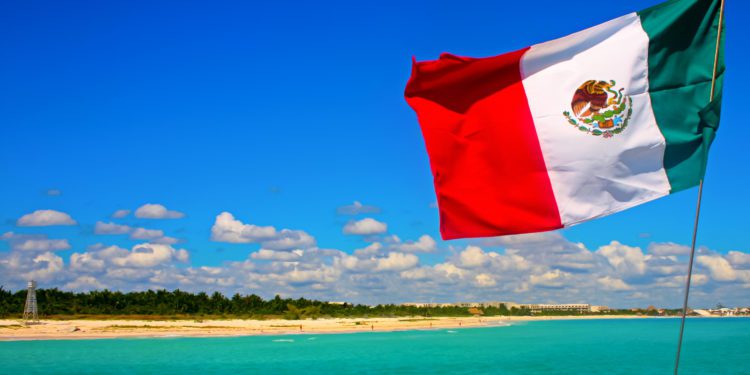
For more detailed information on specific destinations and regulations within Mexico, please visit our articles on:
- Mexico Business Aviation Destination Guide
- Mexico City Business Aviation Destination Guide
- Mexico Permits
- Operating to Mexico During Spring Break
- Mexico Winter Ramp Inspection Uptick
- Mexico SENEAM Fees
- Hidden Compliance Dangers of Operating in Mexico
- Additional Documentation Requirements for Permit Approvals in Mexico
For a successful and trouble-free trip to Mexico, it’s always best practice for business-aviation operators to plan for a range of logistical issues that may impact a flight. Documentation requirements, as well as operating restrictions, need to be anticipated. It’s also advantageous to plan in advance for jet fuel uplifts, ground handling, hotels and ground transportation. Over recent years, security has become a concern in certain areas of Mexico, and it’s important to be aware of and mitigate potential risks. It is also imperative to understand the hidden compliance dangers when operating to Mexico, particularly for charter operators.
Permits
All operators traveling to Mexico — private non-revenue, charter (non-scheduled commercial), follows different landing permit arrangements. Note that the landing permit process to go through depends entirely to your flight purpose. Air ambulance flights operate under part 135. Charter operators can obtain blanket permit that allows them to carry out as many flights as possible without issue a permit each time the operator’s aircraft leave Mexican territory. In the case of diplomatic flights, permits are obtained from AFAC or SEDENA (Mexican Army) via diplomatic channels. Private non-revenue operations to Mexico seldom run into permit or handling issues with adequate advanced planning. However, charter (non-scheduled commercial) operators are under additional scrutiny. Mexican authorities have been rigorously reviewing charter permit compliance. Work with your 3rd-party provider to arrange correct permits, obtain fuel and services credit and for timely security updates.
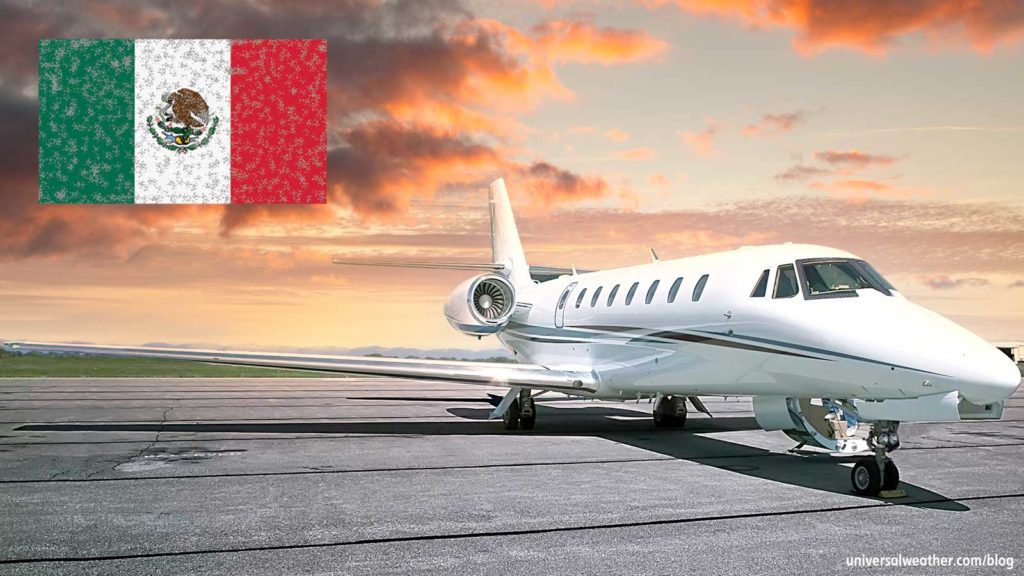
Charter one-shot permits
For charter operations to Mexico, a maximum of five one-short permits are allowed per operator and not per aircraft. When you exceed this number, you’ll need to apply for a blanket charter permit. However, there are some exceptions, and you may be able to obtain more than the allowed five one-shot permits at the discretion of the local airport commandante. After you’ve reached the five-one-shot permit limit, the best practice is to apply for a blanket permit and carry a stamped copy of your application to prove it’s been applied for. It’s not usually an issue to operate charters to Mexico beyond the five permitted one-shots, so long as you present a stamped blanket permit application on arrival with all required original documents.
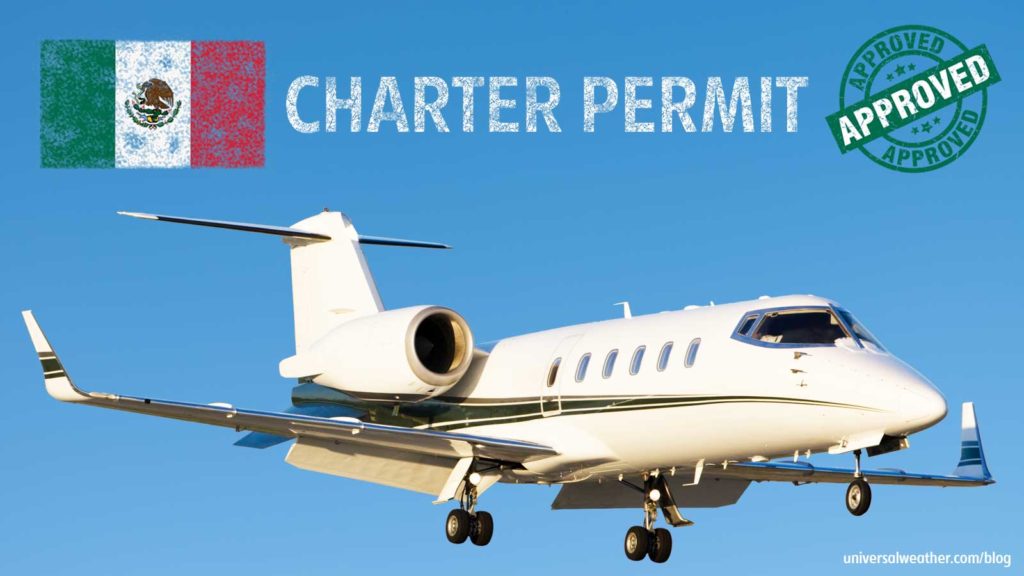
Other permit types
Air ambulance permits are similar to charter permits. You may obtain up to five one-shot permits per operator. You also have the option to apply for a blanket permit. For demo or experimental flights, only one-shot permits are available. Lead time for a demo or experimental permit is five business days, and these cannot be processed upon arrival. In the case of scheduled commercial or aircraft operation with more than 19 passenger seats, you may obtain either one-shot or blanket permits with lead times of two and 90 business days, respectively. While cargo flights are considered a charter, the associated permit process is complex and requires specifically licensed vendors.
Private Non-Revenue Operations
Mexican landing permit – (called AIU in Spanish)
Starting Jan. 1, 2024, Mexico Annual/Multiple-Entry permits for private operators are no longer available. Instead, AFAC (Federal Civil Aviation Agency) is now issuing a Mexican landing permit (called AIU’s) that are valid for 180 days.
However, the situation has become more complex:
- The actual 180 days validity is considered by the MEX CAA as long as the crew declared on it remains the same.
- Even if one of the crew members is different, a new AIU will be required due to crew change.
- Some airports may accept modifications with a payment, while others require a new permit.
When this change was initially announced, it was promoted to have a validity of 180 days and was NOT supposed to be dependent on having the same crew on each trip. However, as is often the case in Mexico, laws are interpreted differently at different airports by different comandantes.
Recommendation
We cannot guarantee that a Mexican landing permit will remain valid for future use based on the different interpretations by the comandante at each airport.
If you have an AIU valid for 180 days but need to change crew, it’s best to submit it for review to see if it will be accepted. Some authorities may allow it with a payment for modification, while others will require a new permit.
Blanket charter permits
Blanket permits for Mexico have no expiration date and may list multiple aircraft on the same permit. Changes to blanket permits are any aircraft additions, removals, or operator changes such as name or address. You may remove or add aircraft to a blanket permit, but your permit will not cover a new aircraft until it’s been processed and approved by AFAC. With blanket charter permits, operators must submit monthly statistical reports showing any flight activity to Mexico, even if you don’t have any flights that month. These reports must be submitted on a particular form, and your 3rd-party provider can file this for you. Lead time for a blanket charter permit or to revise the permit is a minimum of 90 business days. There may be times when AFAC will require additional information or clarification on the documentation before they’ll issue the permit. Note that even though blanket permits do not have expiration dates, you must provide AFAC with a yearly payment and verification along with a statement confirming you’ve made no unlawful infractions.
Permit confirmations
It’s not necessary to note Mexican permit confirmations on your flight plan. Still, AFAC will check, via the airport commandante, that proper permits are in place for each arrival. If you show up without a permit, penalties — including fines and/or grounding the aircraft — will be issued. Keep in mind that even if you have a permit but do not have all the required original documentation onboard the aircraft, or some document has expired, you’ll be grounded, and there may be fines. You’ll not be able to depart until you provide new valid documentation and pay any fines applied by authorities.
Changes in type of flight
Be aware that you must operate into and out of Mexico as the same type of flight. If you operate into the country as private non-revenue, all flight legs must be private, as opposed to charter, and vice versa. Mexican authorities are very vigilant on this requirement. This is why your permit must always be taken to the airport commandante for review and approval before departure from any airport.
Stopping in MMCZ or MMTP when coming from the South or the Caribbean
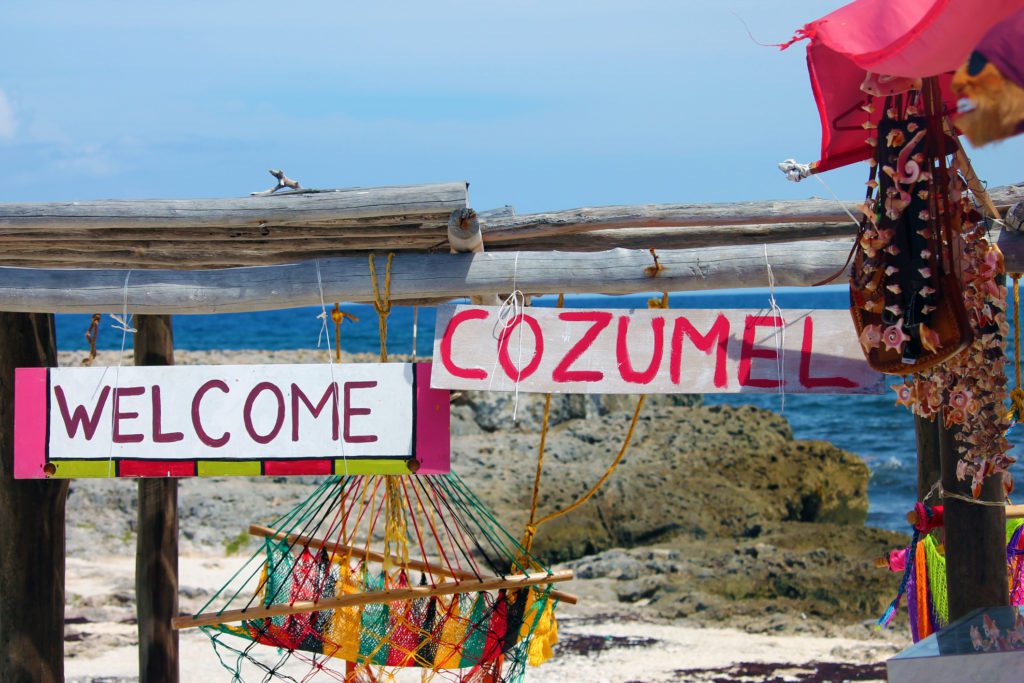
Any aircraft coming into Mexico from Central, South America or the Caribbean will need to first make a stop at either Cozumel, Mexico (MMCZ) or Tapachula, Mexico (MMTP) for security and customs clearance. This is a mandatory stop. The only exception to this regulation is for diplomatic flights with prior approval. During this stop, please prepare your passengers for possible delays, it doesn’t matter if MMCZ or MMTP are used only as a fuel stop. Local authorities must inspect the aircraft, crew and passengers. This means that authorities will require that the aircraft be parked and the engines shut down for the airport authorities to complete their process. For more information pertaining to the exact procedures for each airport above – as there are differences between the two – please contact your 3rd-party provider.
Cabotage
Always consult with our team for specific case evaluations regarding cabotage issues. Cabotage is a sensitive matter, and we want to ensure that operations are correctly assessed. Our team can help determine whether a particular operation falls under general rules or if it qualifies as an exception.
Customs
CIQ must always be cleared in Mexico, even for international tech stops. CIQ clearance involves deplaning all passengers, crew, and luggage, which may be needed for inbound and outbound operations. Once crew and passengers arrive at the airport, the ground handler will escort them through security screening and CIQ and out to the aircraft. Luggage will always be screened and, in some cases, opened for closer inspection. Be aware that even if you’re only on the ground for 30 minutes, all luggage must come off the aircraft for inspection.
CIQ for Crew
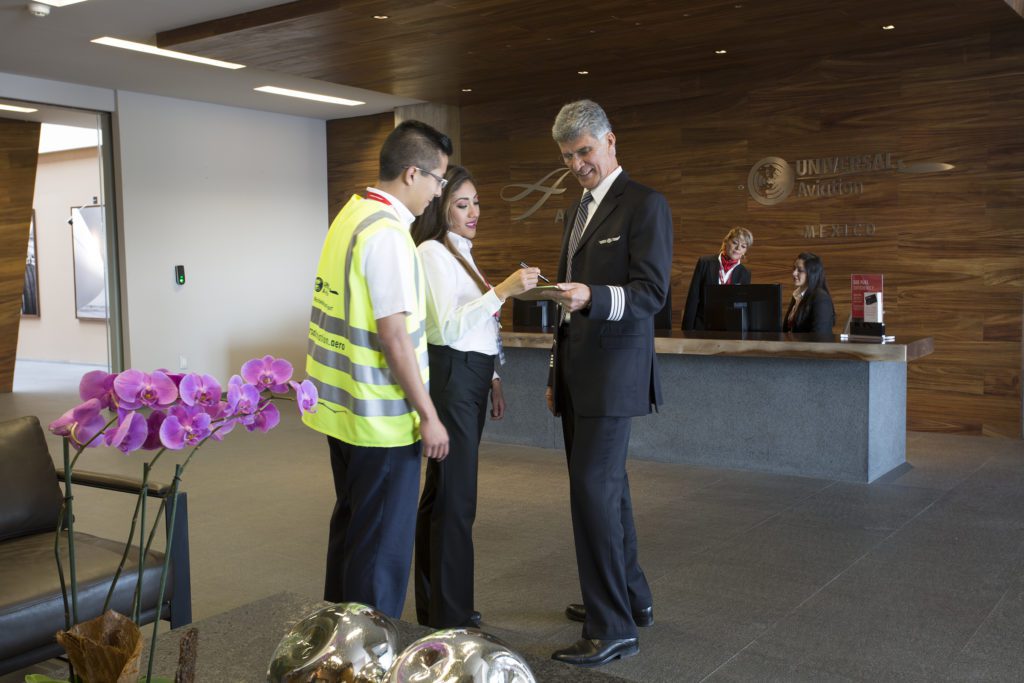
Crew members usually clear customs after the passengers and are escorted to the General Aviation Terminal (GAT) or commercial terminal by the ground handler. Crew members clear CIQ and will, on occasion, be interviewed by the police or the military. Such interviews are seen at Cozumel (MMCZ) and Tapachula (MMTP), as these airports are subject to military inspection for all flights arriving from Latin America, South America or the Caribbean. CIQ clearance via a GAT or commercial terminal usually takes 30-45 minutes. At some airports, including Toluca (MMTO), Remember that crew is not allowed to declare any amusement equipment. Only their work belongings, the process is a little shorter – about 25 minutes. All aircraft documents will need to be presented by the crew at the Comandante office. In some cases at outlying airports, the crew will also need to make a permit payment after presenting the aircraft documents. Certain nationalities require visas, and it’s best to check with your ground handler in advance, as regulations may change. If a visa is required, it must be obtained prior to arrival, passengers arriving without visas will not be allowed into the country. Despite of nationality, flight crew members are allowed to stay by 07 consecutive days; if longer stay, paying immigration fees is required. For certain nationalities, a visa is not needed for stays of up to 48 hours. If your stay is extended beyond 48 hours – for mechanical issues or emergencies – authorities may grant permission for a longer stay. The ground handler can assist with those arrangements. Please also note that the crew clearance can vary by airport, especially at outlying locations. That said, Mexico must not be a final destination.
Special security screening
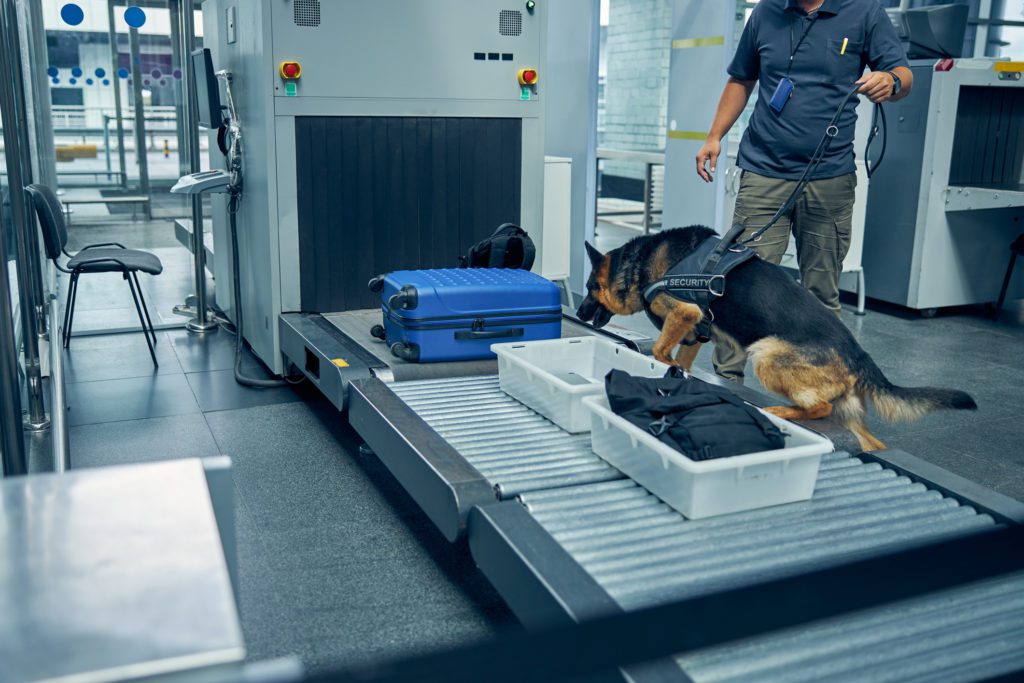
In some cases, dogs will be brought on board to check for money, persons not declared, drugs or food.
Documentation requirements
Mexico regulation requires operators to carry original aircraft documents on board when arriving into Mexico. Although some ports may not ask for them, it is still required for them to be available when requested. If original documents are not on board, you may experience delays and even penalties from the authorities. Passports are required for all nationals entering Mexico (including U.S. nationals, effective January 2007.) Because these requirements can change without much notice, always check with your ground handler or 3rd-party provider to determine if your passengers require visas for Mexico. Passengers must present passports and, when applicable, visas, along with customs cards. To reduce clearance time, your ground handler will pre-fill the customs cards. Crew members must present passports along with aircraft documentation. Documentation requirements include certificates of registration and airworthiness, worldwide insurance, Mexican insurance, pilot licenses and medical certificates. This process will be expedited if documents are forwarded to your ground handler in advance.
Passports
Crews must have valid passports for travel to Mexico, with sufficient remaining validity to cover the intended length of stay. If someone is missing a passport, all onboard may be deported. However, this is at the discretion of the immigration officer. In some cases, only the person with the missing passport will be deported, and the other passengers/crew will be permitted into Mexico.
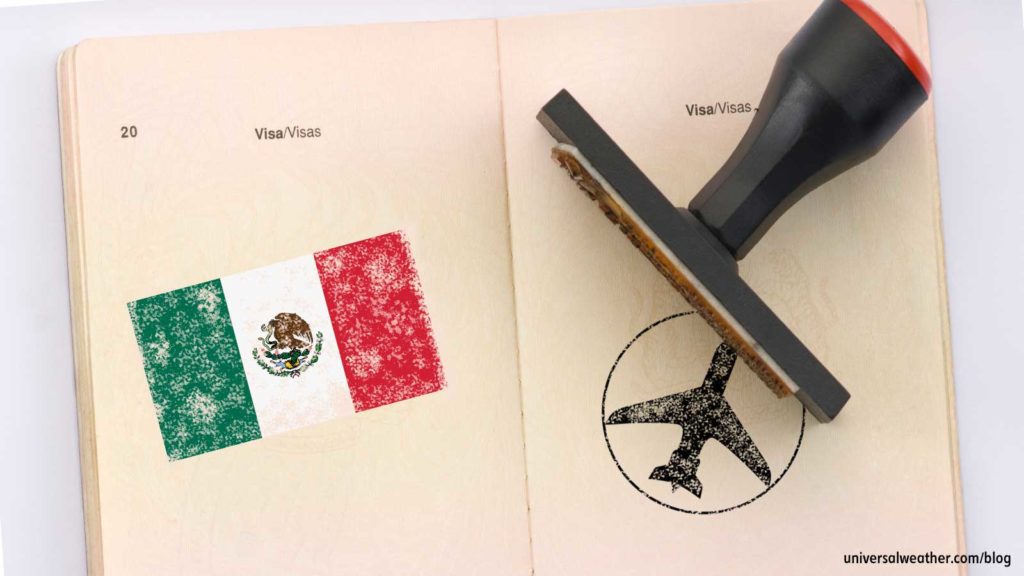
Visas
Active flight crew members, listed on the gen dec, usually do not require visas for entering / staying in Mexico; under this scenario, flight crew members are allowed to stay in Mexico by 07 days. But, if you’re staying longer than this, immigration fee will apply. Visas are always required for certain nationalities of passengers, and these must be obtained before arrival. It’s recommended that you communicate with your 3rd-party provider or ground handler on visa requirement confirmation with local authorities. Note that Mexican immigration authorities accept valid VISA OR PERMANENT RESIDENCE CARD from the following countries: USA, Canada, Japan, UK, Ireland, Schengen area countries.
Regulatory considerations
 Compliance
Compliance
In general, enforcement of local and international regulations is on the rise, and Mexico is no different. You can operate to Mexico compliantly, but it will require due diligence on your part—and possibly changing how you’ve operated to Mexico in the past. Best practice is to do your research. Only work with a partner you absolutely know shares your commitment to operating in a compliant manner. Also, be aware that facilitation payments may be viewed as a bribe in the eyes of the authorities. For more information on compliance best practices when operating to Mexico, see:
- 5 tips for regulatory compliant business aviation ops to Mexico
- The hidden compliance dangers of U.S. charter ops to Mexico and the risk to your business
Ramp checks
As part of a crackdown on illegal charter flights in Mexico from N-Registered Part 91 operators, AFAC has implemented random ramp checks of all foreign flights. The ramp checks are taking place randomly at every airport in Mexico. The complete list of documentation required for the ramp check has been published by AFAC. If operators have all documents available, the entire process should last around 30 minutes. There are cases where operational delays do take place and can be substantial, so it’s recommended that you prepare passengers for this possibility as they are unannounced. These checks happen more frequently when the aircraft is entering from the south.
You can read more about the ramp checks in our blog article.
SENEAM Fees
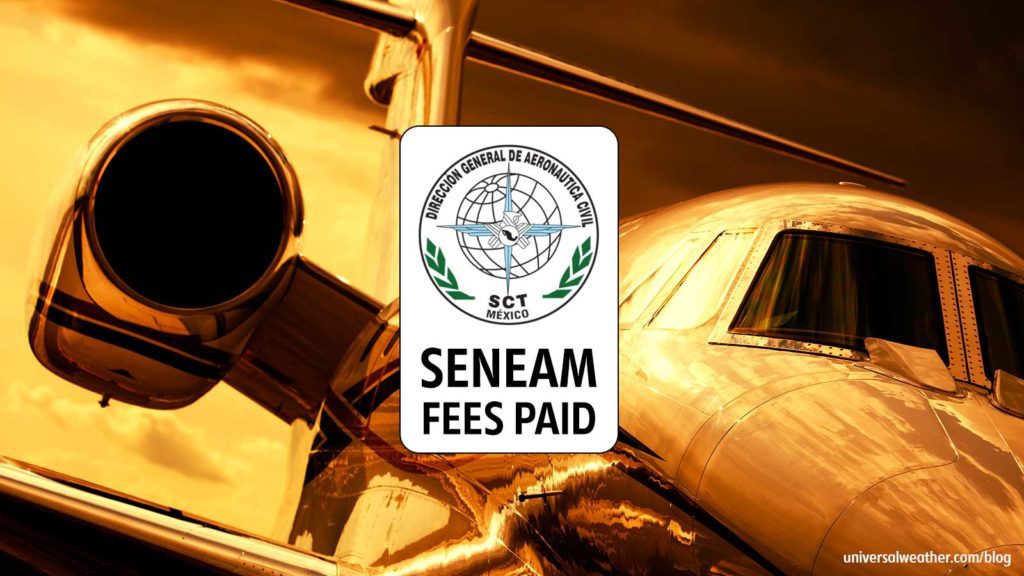
If SENEAM fees are owed for past navigational or airport overtime charges, the aircraft will be grounded in Mexico until these fees are settled. If you’ve landed in Mexico with fees owed, it could take days, to address these issues and obtain permission to leave the country. This can be a particular problem for operators landing on a Friday afternoon, as most government offices are closed on weekends. For more information on SENEAM fees, see:
- SENEAM Fees for Travel to or Over Mexico – Part 1: Calculating Fees & Managing Payments
- SENEAM Fees for Travel to or Over Mexico – Part 2: Dealing With a SENEAM Suspension
Agricultural considerations
Be mindful that Mexico has restrictions on meat and meat products that may be brought into the country. Upon international arrival, agricultural inspection mandates that organic and inorganic trash be separated. If this has not been done before arrival, it will need to be accomplished after landing, and this can cause delays. While it’s usually possible to store onboard catering and foods at the airport, you’ll need to inform your ground handler so they can obtain specific authorization and locate appropriate storage facilities. Suppose you’ve arrived from a country with specific health issues. In that case, agriculture personnel may disinfect your aircraft before anyone getting off. This is usually done by spraying a chemical onto a special carpet, having all onboard walk across it, and spraying all luggage.
Pets

All onboard pets must have health certificates with all vaccinations (including rabies) up-to-date. Pet health information must be provided to your handler before arrival so that they can make necessary arrangements with local authorities.
SAGARPA & SENASICA requires the following 2 documents that a pet owner (not crew member) must present on arrival on original:
- Health certificate. This certificate must be issued by a vet to make sure the pet is on health and free of infections or injuries. This document has only 10 days of validity for
- SAGARPA.Endoparasite / ectoparasite deworming certificate issued within a period of 10 days prior to trip.
- Vaccination certificate. Including vaccine of rabies, indicating the date of application and validity of the vaccine. (Pets less than three months are exempt from this requirement).
Preferably send a copy of the documents prior arrival to make sure no additional documents or last-minute requirements will delay the arrival process. If the pet owner does not bring the mentioned documents, a local veterinary can provide his services, but this can delay the arrival process from 1 to 2 hours.
Upon landing, agriculture agents will come out to inspect the animal. Suppose you’ve not sent all required documentation before arrival. In that case, the pet must remain at the airport until a vet can be brought in to inspect the animal and administer a rabies shot, with charges applicable. If you’re traveling with a pet other than a dog or cat, be aware that there may be entry restrictions.
Vaccinations
At this time, there are no mandated vaccination requirements for Mexico.
Weapons
Mexico is strict in terms of bringing guns into the country and requires specific information in advance. In the event of a hunting trip, please note that passengers must call their hunting club to be assessed on the required documents and information to present before the Mexican Army to process the weapons / cartridges temporary importation, usually the hunting club assist with the said authority on passenger’s behalf.
Restricted Items
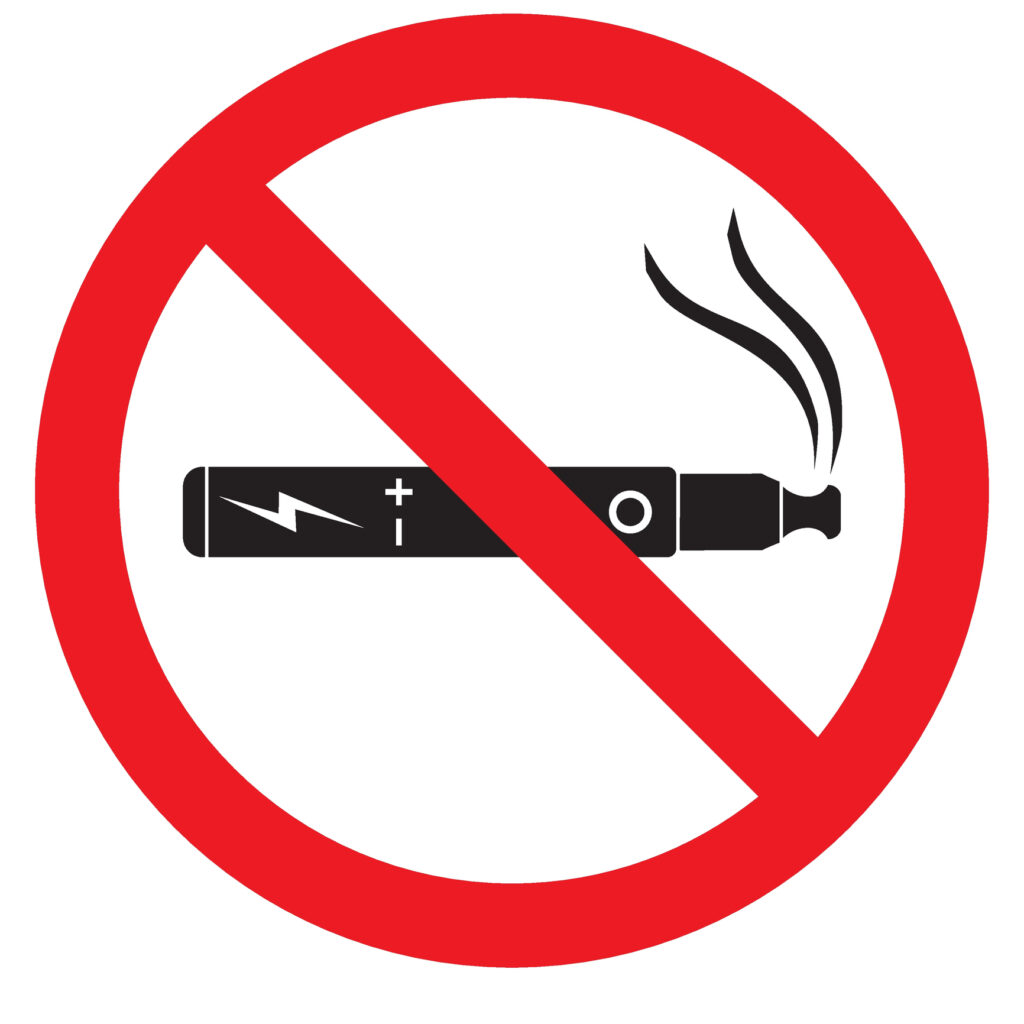
Vaping devices of any type are NOT permitted to enter Mexico. Avoid delays by informing all crew members and passengers NOT to bring vaping devices or illegal substances. Medical prescriptions from a certified physician will not be accepted for any of the following substances or vaping devices: • CBD • THC • Marijuana • Vaporizers with the mentioned substances • Vaporizers with any other substance, such as nicotine Passenger and crew members are NOT ALLOWED to bring any vaping devices in their handbags, carry-ons, checked baggage, or on their person. Customs agents will inspect all luggage pieces and bags in search of vaping devices and/or illegal substances. Importing these goods into Mexico is illegal and can result in fines, additional taxes, police detention, or incarceration.
Flight planning
In Mexico, AFAC and customs, immigration, and quarantine (CIQ) approvals are obtained before any international flight plan will be accepted by ATC. Both departments stamp and sign the flight plan before it being filed with ATC. For domestic operations, flight plans must first be approved, signed, and stamped by AFAC before being filed with ATC. If these approvals have not been obtained, flight plans will be deleted by ATC. If a pilot in command (PIC) or 3rd-party provider just files a flight plan with ATC, it won’t be valid until the above approvals can be obtained.
AFAC review of flight plans
AFAC routinely reviews all flight plan requests to ensure no cabotage is being committed and all paperwork is correct. In the case of U.S.-registered aircraft, AFAC checks the Federal Aviation Administration’s (FAA’s) website to confirm all submitted documentation is in order. They also want to ensure no outstanding SENEAM fees are owed by the operator. CIQ also reviews flight plans for international operations to determine if they will or will not inspect your aircraft. Once AFAC and CIQ complete their reviews, they’ll stamp and sign the flight plan request.
Flight plan information
Note that the PIC’s name and license number must be noted on all ICAO flight plans, and it should be signed by the PIC before going to AFAC and CIQ for review. In some instances, these departments may review a flight plan before it’s signed by the PIC. Still, it’s best to check with your ground handler on local procedures for the particular airport. Be mindful that navigation equipment also must be noted in the ICAO section of flight plans. Some airports in Mexico also require that the flight information regions (FIRs), and the times they’ll be crossed, be notated on flight plans. Here you will be able to find the OFICIAL ICAO format. https://www.gob.mx/seneam/documentos/formulario-de-plan-de-vuelo-en-formato-pdf
Flight plan revisions
It’s essential to be aware that if changes are made to a filed flight plan, the entire process and approvals may need to start again from the beginning, depending upon the particular airport and persons on duty. It’s best to plan 30-40 minutes before departure to revise flight plans. Note that flight plans in Mexico can only be filed 30 minutes prior to the estimated time of departure (ETD) and flight plan validity is -30 min/+90 min. Suppose you need to delay the departure more than 90 minutes from ETD. In that case, it’s essential to advise your ground handler so the flight plan can be correctly updated. Be aware that during the peak season, revising flight plans becomes more complicated at some airports due to congestion and increased activity. During peak operating periods ATC may request operators to stay with confirmed schedules.
Day of operations procedures
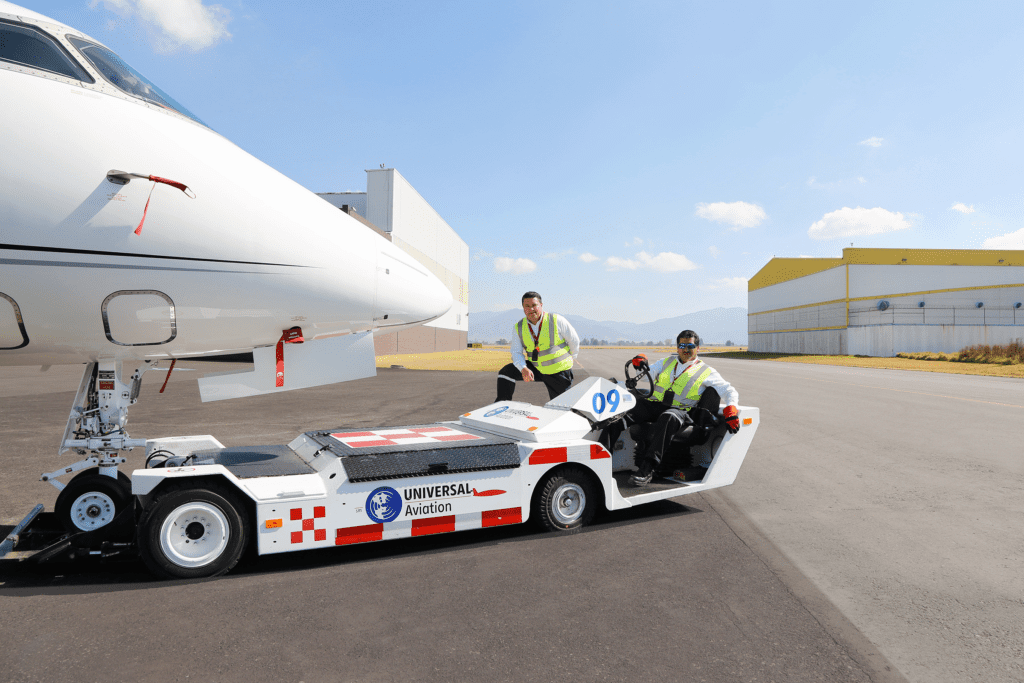
Upon arriving at the airport, the flight plan will be received from the 3rd-party provider, crew, or ground handler. The recommended procedure is to have your handler obtain all required approvals and walk the flight plan over to ATC. If there are issues with the flight plan, ATC will usually, but not always, let the handler know what these may be. Once the flight is ready for departure, you’ll need to contact the appropriate group — either ATC, ground control, or clearance frequency — to obtain engine start permission. Your ground handler will confirm who to contact and will assist with any language issues.
Airspace and routing restrictions
Be aware that revisions may be required to requested routings and/or flight levels. For example, when traveling from Mexico toward Texas on UJ45, ATC may request a change of route by advising your ground handler. Other route and flight level changes may be requested verbally by ATC. Be aware that certain airspace in Mexico is reserved for military purposes. These airspace closures are usually between 1500-2200 UTC Monday-Friday but can vary depending upon military needs. In some cases, if ATC knows the military is not actively flying in the region, you may be permitted to overfly this restricted airspace on a case-by-case basis. To avoid potential delays caused by routing restrictions, please provide your handler with the ICAO FPL in order to revise in advance with the local ATC if routing corrections are required, this will also allow the customer to better prepare the flight briefing.
Equipment requirements
An Electronic Locator Transmitter (ELT) is required for any operation to Mexico. Reduced Vertical Separation Minimum (RVSM) certification is also necessary for flights above flight level (FL) 290. When operating in Mexico, it’s best to have Required Navigation Performance (RNP)-4 or RNP-5 certification. Still, it’s necessary, for many airways, to have at least RNP-10 certification. RNP-10 is required to use airways starting with UT, UQ, UR, or UB. If you don’t have RNP-10 certification, you’ll need to use airways starting with V or J. Operators must ensure routing and navigational equipment are correctly listed in the flight plan’s appropriate ICAO section. If there are errors in your flight plan’s equipment section, it will be rejected, and you’ll need to begin the flight plan application process again. We recommend sending all flight plan information to your ground handler in advance so that they can review it and ensure there are no issues.
Security

Throughout Mexico, airport security is very good, with both airport police and military patrols of terminal and ramp areas. Your ground handler can arrange additional security for your aircraft while in Mexico, but only unarmed guards are permitted airside. We recommend security briefings for all planned destinations within Mexico to gain a better perspective of the local situation. Depending on threats, you may want to consider security for aircraft, crew and passengers. Take precautions, especially in the northern region of the country, and limit your time on the ground. For instance, crew should remove uniforms and company ID before departing the airport and keep a low profile in order to avoid being targeted.Peak season/high traffic events. It’s always best to arrange pre-paid and vetted secure transportation when traveling from the airport to town. This is highly recommended when transiting between Toluca (MMTO) and Mexico City. Depending on the location, off-airport security for passengers/crew may be advised and 48 hours’ lead time is suggested when requesting these services.
Peak season
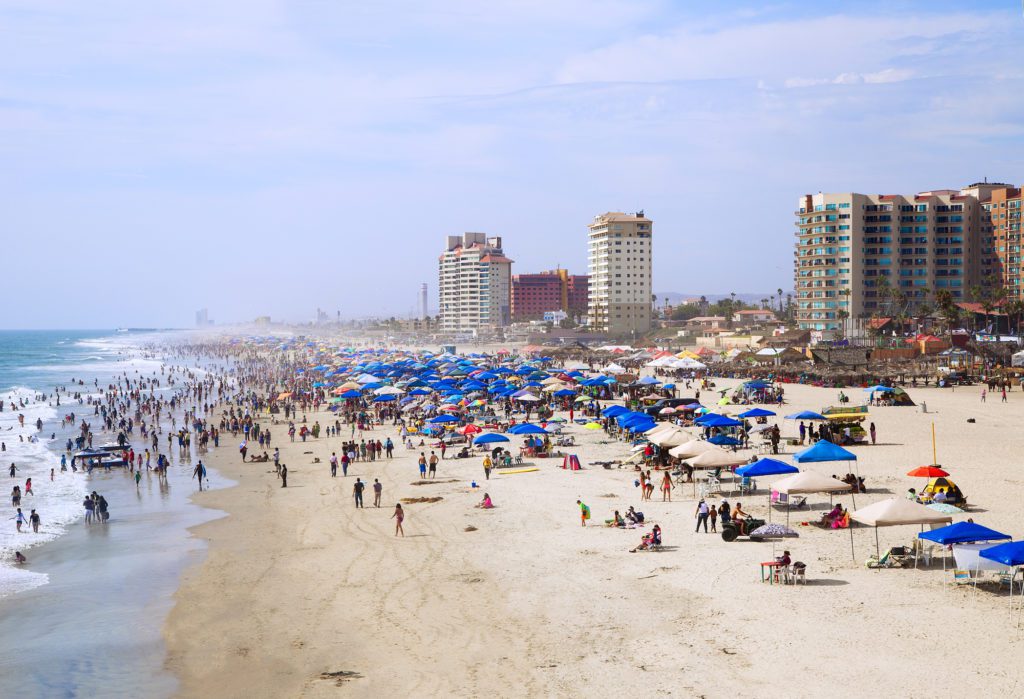
We recommend staying at 4- or 5-star hotels, as they provide better safety for your crew and passengers. Arrange pre-paid transportation with a private transport company, to maximize safety for crew and passengers. It’s also advisable to obtain the driver’s name, cell phone contact and vehicle license number in advance.
Preferred hotel accommodations can sell out at large touristic areas during November-March high season – particularly over Christmas, New Year’s, Easter, long weekends and other holiday periods. Accommodations may also be in short supply, in some areas, during summer months when Mexicans take their vacations. If you’re making last-minute or short-notice hotel bookings, your ground handler will be able to assist, but preferred accommodations, in some cases, may be difficult to secure depending on location, time of year and local events taking place. During this period of time, there may be some delays encountered during the customs and immigration clearance. Some locations where such delays may be encountered are Los Cabos (MMSD), Puerto Vallarta (MMPR) Merida (MMMD) Cozumel (MMCZ) Cancun (MMUN).In MMSD, MMPR MMCZ MMMD MMUN, delays of up to 40 minutes may be encountered, due to longer lines at the Comandancia. There may be fewer customs and immigrations officers, which may create delays.
Cultural considerations

The environment for business meetings is relaxed in Mexico, and it’s customary to have conversation prior to a meeting. Mexicans prefer to eat later than is custom in some parts of the world – lunch is usually between 2-4 pm, with dinners typically beginning after 8:30 pm. It’s worthwhile to take the time to visit local museums, art galleries and historic sites while in Mexico, as the country has a rich culture and history. Late night Latin music venues – typically active between 11 pm and 5 am – are popular with some crews, but security precautions should be considered when out late at night.
Universal Aviation Mexico can help
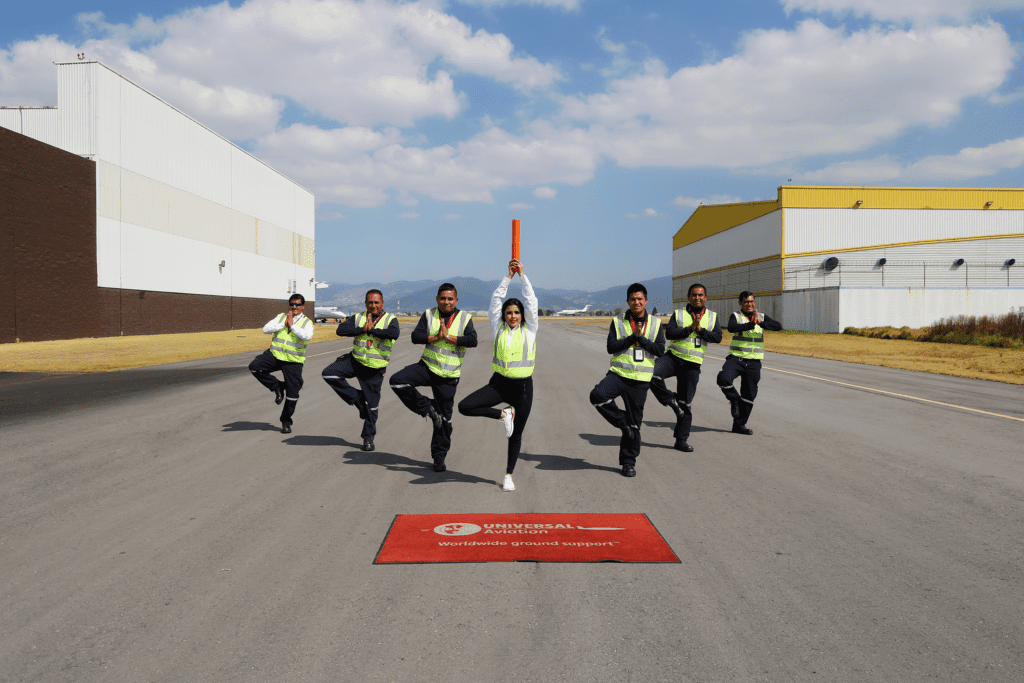
Universal Aviation has had a presence in Mexico for more than 30 years. Our primary locations are in Toluca, Cancun, Cozumel, Monterrey, Puerto Vallarta, San Jose Del Cabo, We also provide on-airport supervision at destinations across Mexico. More information and team contact info are available on our website.




